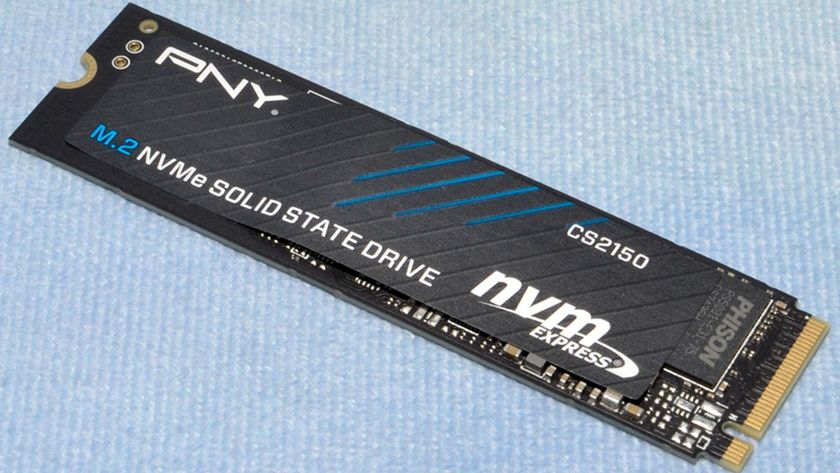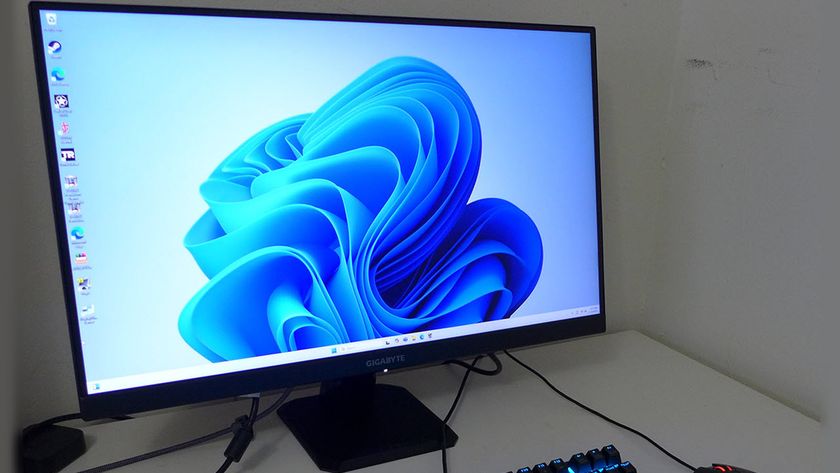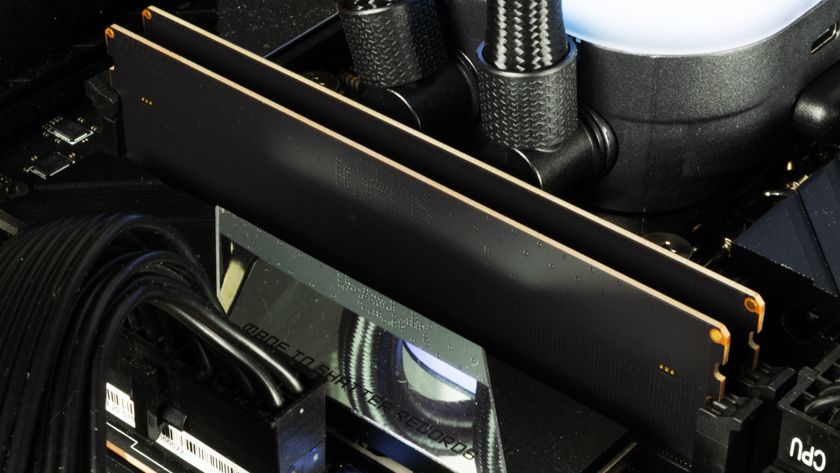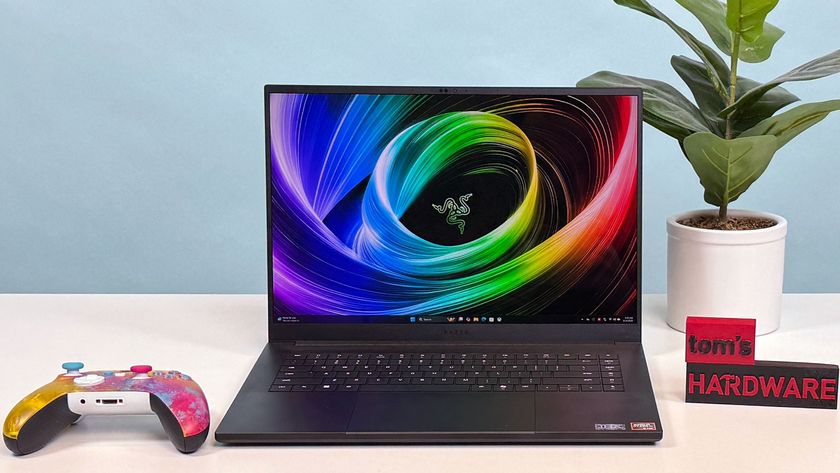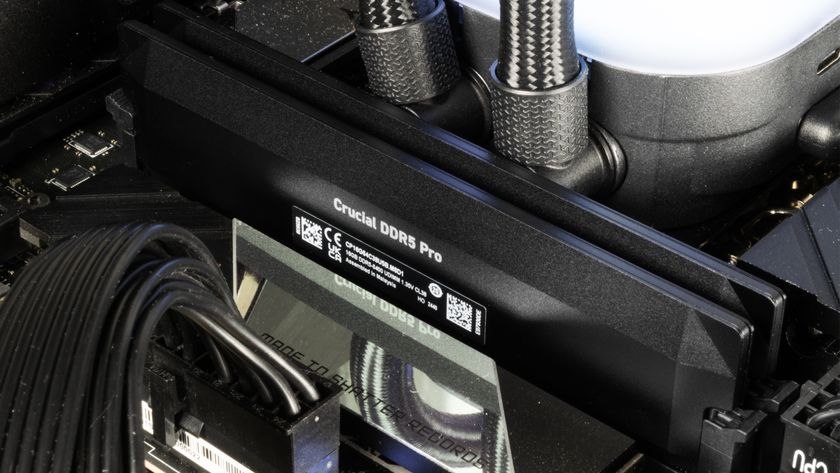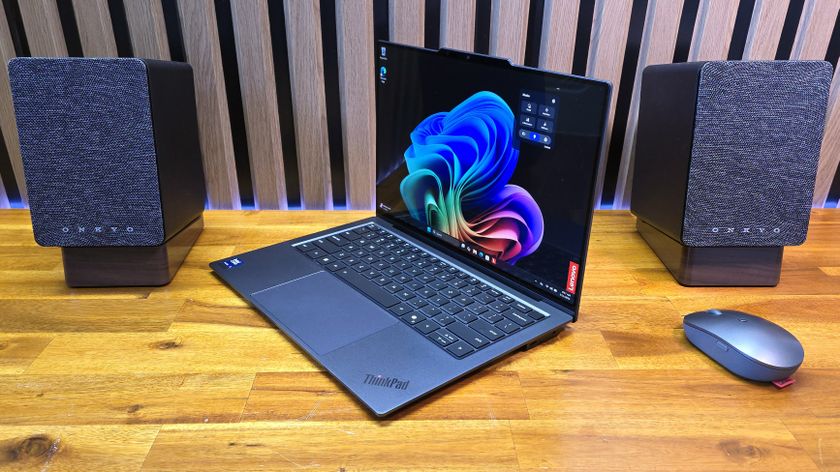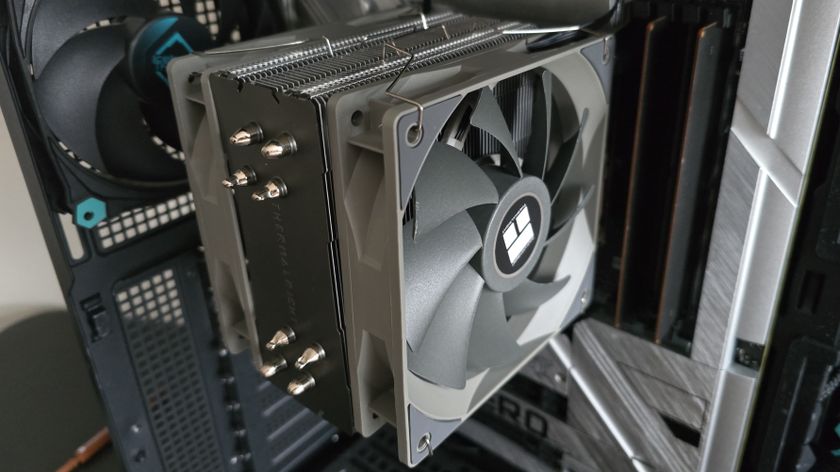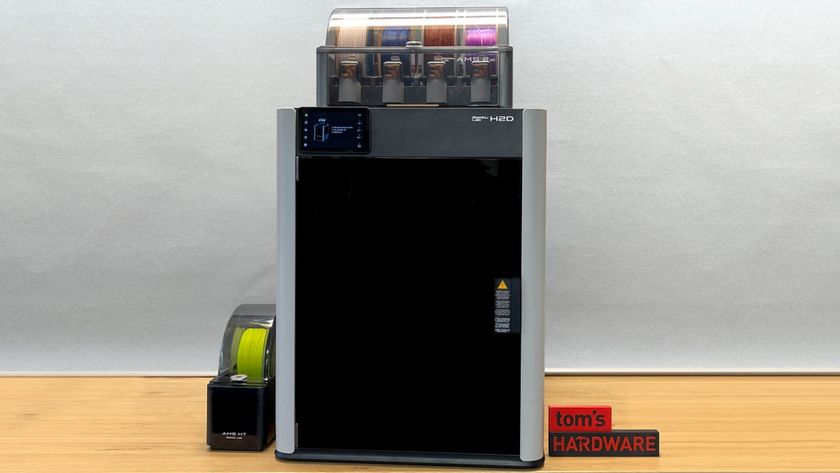Early Verdict
Solid as a rock and gives me room to grow. Worth the investment for serious advanced prosumers.
Pros
- +
Great descriptions in UEFI
- +
Plenty of connectivity options
Cons
- -
Turbo BCLK is not enabled, odd color scheme
- -
8-pin power header location
Why you can trust Tom's Hardware
Introducing Gigabyte's X170-EXTREME ECC
All work and no play makes me a dull nerd. I go to work in the morning, come home at night, take care of the house, rinse, and repeat. By amassing real life issues, projects, and my techie side jobs, it's no wonder that my once powerful college PC has become a relic by today’s standards. Reviewing AMD products is fun, but looking at 2012 hardware in 2016 can definitely make for some uninspired writing.
As I trudged through the last AMD 970 chipset motherboard review, the powers that be gave me a new task: apply my professional experience to consumer hardware. Traditionally, prosumer products get scant attention because they are costly, but Thomas Soderstrom's C232 motherboard pick in his 2016 Q1 System Builder article mixed things up a bit. Naturally, I was intrigued with the challenge, and since Zen is still out on the horizon (though quickly approaching), it’s time to ascend to Intel’s C236 and C232 chipsets! And hence, Gigabyte's X170-Extreme ECC. But first, a little background.
Intel's C236 And C232: The Platform Differentiation Game
With the introduction of Skylake processors, Intel split its consumer grade Core series from its Xeon brand by using the Sunrise Point PCH. In the past, builders were able to deploy the sometimes-less-expensive Xeon processors into their consumer grade motherboards to reach performance levels similar to the in-demand Core i7 brethren. By using consumer-grade motherboards, tweakers were also able to overclock their Xeons for impressive gains without the headaches of locked down server UEFIs.
| Product Name | Intel® Core™ i7-6700 Processor | Intel® Xeon® Processor E3-1230 v5 |
|---|---|---|
| Code Name | Skylake | Skylake |
| Essentials | ||
| Processor Number | i7-6700 | E3-1230V5 |
| Status | Launched | Launched |
| Launch Date | Q3'15 | Q4'15 |
| Lithography | 14nm | 14nm |
| Recommended Customer Price | $303.00 - $312.00 | $250.00 - $261.00 |
| Included Items | Thermal Solution - E97379 | Row 7 - Cell 2 |
| Performance | ||
| # of Cores | 4 | 4 |
| # of Threads | 8 | 8 |
| Processor Base Frequency | 3.40 GHz | 3.40 GHz |
| Max Turbo Frequency | 4.00 GHz | 3.80 GHz |
| Cache | 8MB SmartCache | 8MB SmartCache |
| Bus Speed | 8 GT/s DMI3 | 8 GT/s DMI3 |
| TDP | 65W | 80W |
| VID Voltage Range | Row 16 - Cell 1 | 0.55V-1.52V |
| Supplemental Information | ||
| Embedded Options Available | Yes | No |
| Conflict Free | Yes | Yes |
| Datasheet | Link | Link |
| Memory Specifications | ||
| Max Memory Size (dependent on memory type) | 64GB | 64GB |
| Memory Types | DDR4-1866/2133, DDR3L-1333/1600 @ 1.35V | DDR4-1866/2133, DDR3L-1333/1600 @ 1.35V |
| Max # of Memory Channels | 2 | 2 |
| Max Memory Bandwidth | 34.1 GB/s | 34.1 GB/s |
| ECC Memory Supported ‡ | No | Yes |
With Sunrise Point, Intel gives Xeons their own chipsets. On the downside, Xeons and their motherboards have locked-down multipliers, which force manufacturers to design workarounds for effective overclocking. For example, overclocking the BCLK frequencies was proven quite effective when Thomas implemented this approach with his ASRock sample. On the upside, using the server mindset grants these Xeon chipsets additional features that some prosumers need.
| Essentials | Intel® Z170 PCH | Intel® C236 PCH | Intel® C232 PCH |
|---|---|---|---|
| Launch Date | Q3'15 | Q4'15 | Q4'15 |
| Bus Speed | 8 GT/s DMI3 | 8 GT/s DMI3 | 8 GT/s DMI3 |
| Embedded Options Available | No | Yes | No |
| Lithography | 22nm | 22nm | 22nm |
| Recommended Customer Price | $47.00 | $49.00 | $34.00 |
| Supports Overclocking | Yes | No | No |
| Graphics Specifications | |||
| # of Displays Supported ‡ | 3 | 3 | 0 |
| Expansion Options | |||
| PCI Support | No | No | No |
| PCIe Revision | 3.0 | 3.0 | 3.0 |
| PCIe Configurations ‡ | x1, x2, x4 | x1, x2, x4 | x1, x2, x4 |
| Max # of PCIe Lanes | 20 | 20 | 8 |
| I/O Specifications | |||
| USB Revision | 3.0/2.0 | 3.0/2.0 | 3.0/2.0 |
| # of USB Ports | 14 | 14 | 12 |
| USB 3.0 | Up to 10 | Up to 10 | Up to 6 |
| USB 2.0 | Up to 14 | 4 | 6 |
| Max # of SATA 6.0 Gb/s Ports | 6 | 8 | 6 |
| RAID Configuration | 0/1/5/10 | 0/1/5/10 | 0/1/5/10 |
| Integrated LAN | Integrated MAC | Integrated MAC | Integrated MAC |
| PCIe Port Revision | 3 | 3 | 3 |
| PCIe Port Configurations | 1x16, 2x8, 1x8+2x4 | 1x16, 2x8, 1x8+2x4 | 1x16, 2x8, 1x8+2x4 |
The C236 chipset follows the connectivity of Z170 fairly closely, but implements more advanced technologies aimed at the server and workstation crowd. While Z170 lacks Intel vPro, RST Enterprise, Node Manager, Standard Manageability, and Trusted Execution Technology, C236 enables them all, though some of these features are still available to the Q170 chipset.
Similarly, Intel's C232 follows the B150 but with a few more differences. C232 supports multiple PCIe configurations by default but does not support Intel Virtualization Technology or RST. As Michael Sexton reported in his article on the C232 and C236 chipsets, the added cost and lack of extra features might not make the C232 the smartest choice for most applications.
| Advanced Technologies | Intel® Z170 PCH | Intel® C236 PCH | Intel® C232 PCH |
|---|---|---|---|
| Intel® VT-d ‡ | Yes | Yes | Yes |
| Intel® vPro Technology ‡ | No | Yes | No |
| Intel® HD Audio Technology | Yes | Row 2 - Cell 2 | Row 2 - Cell 3 |
| Intel® RST | Yes | Yes | No |
| Intel® RST enterprise | No | Yes | Yes |
| Intel® Standard Manageability | No | Yes | No |
| Intel® SRT | Yes | Yes | No |
| Intel® SIPP | No | Row 7 - Cell 2 | Row 7 - Cell 3 |
| Intel® Small Business Advantage | No | Row 8 - Cell 2 | Row 8 - Cell 3 |
| Intel® Node Manager | Row 9 - Cell 1 | Yes | No |
| Intel® Platform Protection Technology | |||
| Trusted Execution Technology ‡ | No | Yes | Yes |
Product vendors get to start tacking on bells and whistles, and with the additional cost of C236/C232 chips, most prosumer grade boards include things like debug LEDs, on-board power buttons, and additional probe points for voltage measurements. Given the server and workstation targets, up-time is at a premium, and vendors take the additional time to test and verify that products meet a broad spectrum of operating conditions, usage scenarios, and 24x7 utilization. For most professionals, that makes a big difference.
Gigabyte's X170: The Camo Clad C236
At first, I was confused by the “X170” name, but given the similarities with the Z170 line, this is an effective way to pull attention from that market. The GA-X170-Extreme ECC is a beautiful specimen. After reviewing more budget-oriented products, it is nice to move up to a truly high-end product. Given my affinity with Arma and DayZ, I actually enjoy the camo paint job adorning this motherboard.
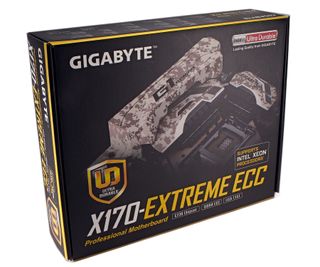
Using my reviewer goggles, though, I am puzzled by this design choice. Most enthusiasts like to stick with RGB colors when accessorizing their rigs, and professionals really shouldn’t care what the product looks like as long as it performs. Is Gigabyte trying to appeal to the operator in all of us or simply trying to distinguish the product against a sea of red, blue, and neon yellow color palettes? Regardless of color scheme, this product is well polished from a board and packaging perspective.
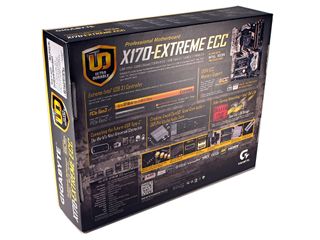
As usual with the Gigabyte boards I’ve tested, the X170-Extreme ECC comes with the “Ultra-Durable” branding plastered on all but one side of the box. This package is less flashy than those from some of my previous reviews, and Gigabyte’s use of a matte black base enables the company to use glossy pictures in order to emphasize selling points of the product. The front and sides of the box attempt to be minimalist, but the back looks as if the marketing team had one too many brainstorming sessions. The camo stripe conflicts with the abundant small text, color schemes clash with the primary use of yellow and brown, and the sense of refinement is lost.
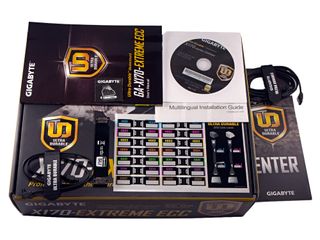
Opening up the box, I am greeted with extras that resemble those of the 970 Gaming-SLI: four SATA cables (one of which is not pictured, it is still in my PC), SLI bridge, G Connector, door hanger, user manual, and install guide. New to the contents are cable ties, back panel port protectors, and stickers! Now I can retire my colored dots and sharpie markers labeling my cables.
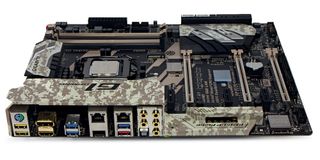
Rather than walking around the board, I’m going to talk about things unique to this board design and which might be difficult to pick up from stock photos. Obviously, the back panel is different: It has dual NICs powered by Intel’s GbE LAN and Killer E2400 chipsets, USB 3.1 Type-C, DisplayPort 1.2, and an HDMI 2.0 port (if the processor supports it). The X170-Extreme ECC is the first C236 motherboard to use Intel’s certified third-generation Thunderbolt controller through its USB Type-C connector. High bandwidth users can now use the single cable 40Gb/s link to support up to six Thunderbolt devices, though compatibility may vary according to the deployed system configuration.
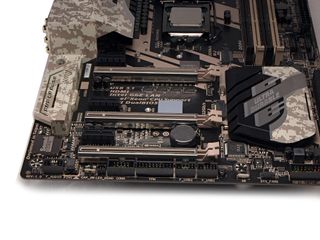
Rather than exposing the audio segment of the PCB, Gigabyte chooses to extend its VRM heatsink shroud beyond the backplate to the audio capacitors. The LED trace path is still visible, but do expect to see some of that shroud block some light. The bottom side of the board includes two switches: the audio gain and Single/Dual BIOS selector.
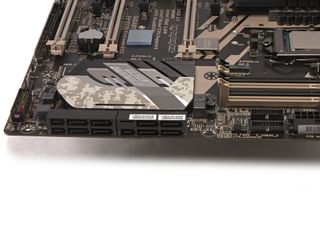
Most consumers do not have access to SATA Express drives, but professionals and other custom houses might wish to deploy them in their workstations. The SATA ports are still fully compatible with SATA 3 drives (and we've even seen consumer USB 3.1 bay panel devices that use the PCIe connection).
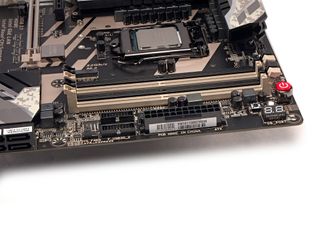
The top right of the board has the big ‘ol red power button next to the DIMM connectors, and the debug display is right next to the clear CMOS and reset switches. Voltage sense points are also accessible above the DIMM connectors. For such an expensive board, I would prefer the dual-hinged DIMM connectors so I can receive that audible click while installing my DIMM sticks.
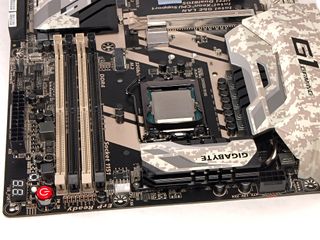
To the left of the memory connectors, both the four-pin CPU, and optional CPU fan headers are tightly laid out before the top side of the 8+3 phase voltage regulator heat sink. I am happy to see that Gigabyte did allow for plenty of space around the socket for a broad selection of cooling solutions. However, I wish that the CPU eight-pin power connector and final chassis fan were given a little bit more real estate on the board so I wouldn’t have to squeeze my sausage fingers between the VRM heatsinks to plug those cables in.
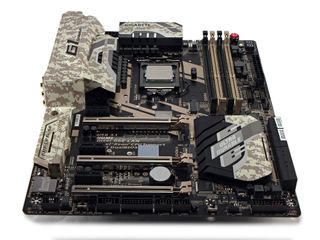
Connectivity options are plentiful on this product, but tread lightly, there are some caveats. The PCIe x16 connectors are equipped with Gigabyte’s metal shielding for extra strain resistance. The slots are configured -- from top to bottom -- x16, x8, and x4. When the top and middle connectors are populated with x16 cards, the top card will run in x8 mode.
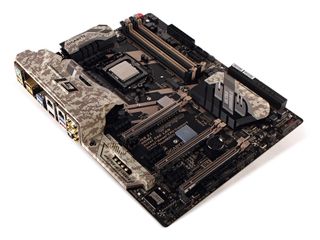
There are also two M.2 connectors on the board, both of which are located in very hot sections between the CPU and first x16 slot, and between the first and second x16 slot. Oh, and disregard that block of grey on the bottom M.2 section in my photos. I added that little pad to help reduce any flex on my tiny M.2 drive. A word of caution: If you are going to deploy a card into the third PCIe x16 slot, do not plug an M.2 card into the M2H_32G slot; the configuration will not work as desired (it is clearly listed on the product page too).
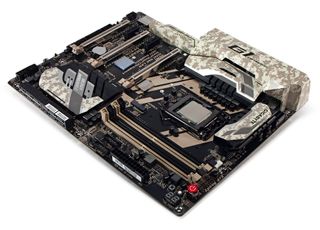
Besides some minor placement issues, this product fits a lot of my configuration requirements. I would have preferred different memory connectors and a little more care in placing the CPU power connector and final chassis fan header. This board is ready to deploy in my local data center, also known as my new Thermaltake Suppressor F-51 chassis.
| Gigabyte GA-X170 Extreme ECC | |
| Chipset | Intel C236 |
| PCB Revision | 1.0 |
| Voltage Regulator | 8+3 Phase |
| I/O Panel Connectors | |
| PS/2 | 1 |
| USB 3.1 | 1 Type-C, 1 Type-A |
| USB 3.0 | 5 |
| USB 2.0 | 0 |
| Network | 2 |
| CLR_CMOS Button | No |
| Digital Audio Out | Yes |
| Digital Audio In | No |
| Analog Audio | 5 |
| Video Out | HDMI 2.0, DisplayPort 1.2 |
| Other Devices | None |
| Internal Interfaces | |
| PCIe 3.0 x16 | 3 (x16/0/x4*, x8/x8/x4*) |
| PCIe 2.0 x16 | 0 |
| PCIe 2.0 x1 | 3 (Gen 3) |
| USB 3.0 | 2 (shared with 2.0) |
| USB 2.0 | 2 (shared with 3.0) |
| SATA 6.0 Gb/s | 6+2 |
| SATA Express | 3 |
| M.2 Socket 3 | 2 (*M2H_32G shared with x4 PCIe) |
| 4-Pin Fan | 5 |
| 3-Pin Fan | Row 26 - Cell 1 |
| Front Panel Audio | 1 |
| S/PDIF I/O | |
| Internal Buttons | 1x Power, Reset, Clear CMOS Button |
| Internal Switch | 1x Audio Gain, BIOS Switch |
| Diagnostics Panel | Yes |
| Other Devices | 1 COM, 1 TPM, Voltage Mearsurement Points |
| Mass Storage Controllers | |
| Chipset SATA | 6x SATA 6Gb/s |
| Chipset RAID Modes | 0/1/5/10 |
| Add-In SATA | 2x SATA 6Gb/s ASMedia ASM1061 |
| Add-in USB 3.0 | 4x USB 3.0/2.0 via Renesas |
| Networking | |
| LAN Controller | Intel GbE LAN & Rivet Networks Killer E2400 |
| WiFi | None |
| Bluetooth | None |
| Audio | |
| HD Audio Codec | Creative Sound Core 3D |
| DDL/DTS Connect | None |
| Warranty | 3 Year |
MORE: Best Motherboards
MORE: How To Choose A Motherboard
MORE: All Motherboard Content
Current page: Introducing Gigabyte's X170-EXTREME ECC
Next Page The GA-X170-EXTREME ECC UEFI: More Options, Less Overclocking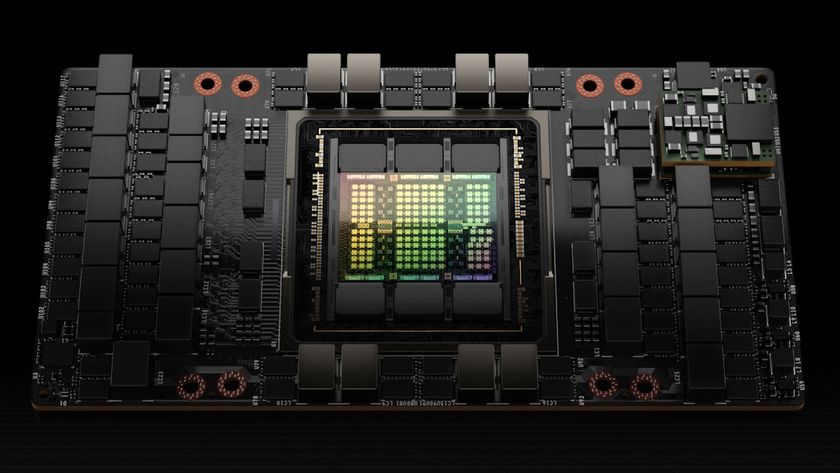
Chinese tech giants boosted Nvidia GPU purchases by 4x to 6x during Q1

Russian spy infiltrates ASML and NXP to steal technical data necessary to build 28nm-capable fabs
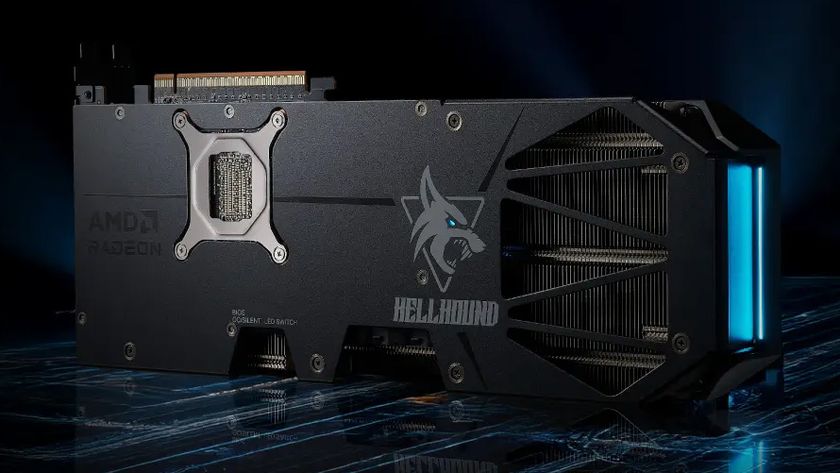
Defective RX 9070 XT card with pitted silicon surface runs extremely hot — report indicates it's unclear if this was an isolated incident
-
Malik 722 this board and z170x gaming 7 looks like the very same thing same layout,same features and same connectors.although a different paint scheme.but what really makes this board more pricey than gaming 7 aside from xeon support.Reply -
andrewpong Hasn't SuperMicro's X11SAT-F supported Thunderbolt 3 on the C236 chipset for a while now?Reply -
logainofhades Still saddened by Intel forcing Xeon to use a C232/236 chipset. Been able to run Xeons, in consumer chipsets, since at least core 2. I had an X3210 @ 3.6ghz, in an Abit P35 pro, back in the day.Reply -
The Jedi Yeah, you're a hardware reviewer Jacob. That is all the excuse you need to be on the bleeding edge with a Kaby Lake system and a 4K monitor with the graphics to drive it.Reply
Good to read about this unique motherboard. However the lack of XMP is a dealbreaker for me. I think the Asus Sabertooth with the 5-year warranty vs. 3 would do just as fine. Kaby Lake is in my future anyway with that new Netflix DRM it makes available. -
TheTerk @Malik, two words - Ultra Durable. IF testing and reliability are important to you, C236 is the way to go. Otherwise, that Gaming 7 is a spitting image of this board.Reply
@AndrewPong - This board might have been released a week or two before the SuperMicro. Here's Gigabyte's press release: http://www.gigabyte.us/press-center/news-page.aspx?nid=1420
@The Jedi - Is it bad that I'm running a VM on my test rig to run some good ol fashioned Windows XP? If you guys think of something crazy to do on this thing, let me know! -
blazorthon A quote from the third page:Reply
The AMD 970 data presents similar trends in the PCMark Home, Creative, and Work workloads, though the deltas are not as dramatic. The move to DDR4 and this Gigabyte X170-Extreme ECC shows a whopping 38% increase in memory bandwidth compared to the DDR3 implemented in the Gigabyte 970 Gaming-SLI sample running at similar frequencies.
The move to DDR4 has practically nothing to do with Intel's advantage in memory bandwidth. Intel simply has a better memory controller. They've had an advantage in this since Sandy Bridge and that's easily knowable since every Intel and AMD CPU review since Sandy with memory benchmarks demonstrates it with DDR3 and with DDR4.
DDR4 does not improve bandwidth over DDR3 at the same frequency when all else (within reason) is equal. It improves bandwidth by allowing higher frequencies.
